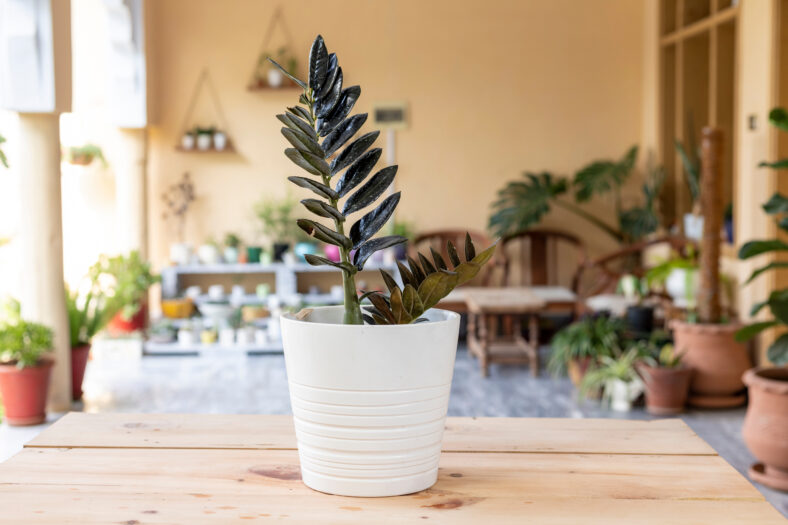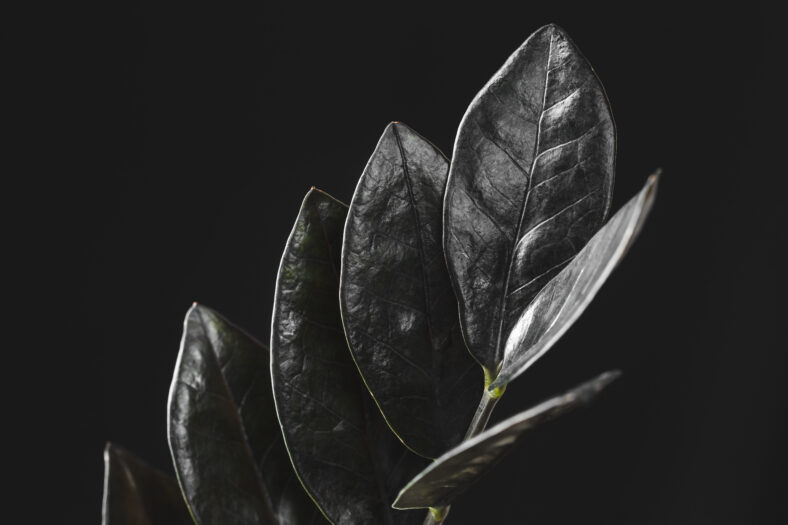How To Care For A Black ZZ Plant, Which Went From A Rare Find To A Trendy Must-Have

All kinds of houseplants have the potential to transform a space, but few do it with the same dramatic flair as the black ZZ Plant.
Also known as the raven ZZ plant, it features almost-black foliage that starts as a bright lime green before deepening to a rich and mysterious purple-black.
This variety has quickly become a favorite among indoor plant lovers. It hails from East Africa and was originally part of Costa Farms’ “Trending Tropicals” collection in 2019. Now, the black ZZ plant has gone from a rare find to a trendy must-have home centerpiece.
Its allure isn’t just skin-deep, either. This plant is also extremely popular since it’s practically indestructible. It is hardy and low-maintenance, making it perfect for even the busiest plant parents.
So, if you’re looking to add a touch of exotic intrigue to your living space, here’s how to help the black ZZ plant flourish.
How To Care For The Black ZZ Plant
Being that the black ZZ plant is tropical, it does best in warm temperatures and standard indoor humidity levels. It can tolerate more humid environments, too, but high moisture isn’t actually a necessity for its health.
To keep your plant comfortable and prevent stress, aim to maintain a temperature range of 65°F to 85°F.
Next, an airy, well-draining soil mix is optimal for this variety. Even though it can handle standard houseplant soil, it prefers to be planted in a blend enriched with materials like perlite, sand, or pumice to improve drainage and prevent water retention.

Sign up for Chip Chick’s newsletter and get stories like this delivered to your inbox.
Additionally, black ZZ plants can gain an extra boost from regular fertilizing during the growing season. You should feed your plant with a balanced houseplant fertilizer every three to four weeks to support strong development.
This stunning variety is incredibly versatile when it comes to lighting and can adapt to anything from bright, indirect light to low-light settings. However, growth will be minimal in low light conditions, and any new shoots may become leggy.
So, for ideal growth, provide it with plenty of bright, indirect light. Be cautious about placing the black ZZ plant in direct sunlight, especially during the harsh afternoon hours, since it can cause the leaves to burn.
In regards to watering, this houseplant is actually highly drought tolerant since it stores water in its thick rhizomes. That’s why frequent watering isn’t necessary. Plus, over-watering can be dangerous, leading to root rot.

You should always let the soil dry out completely between waterings. And if you’re ever unsure whether to water, it’s safer to wait a little longer. The black ZZ plant is able to handle under-watering much better than over-watering.
This variety can occasionally fall victim to common pests, such as mealybugs, spider mites, thrips, and scale. Keep an eye on your plant to catch any infestations early, and if you find pests, treat your plant with neem oil or insecticide.
Finally, root rot is the primary disease concern with black ZZ plants. It’s often caused by over-watering but can also result from bacteria-contaminated soil.
Signs of root rot include mushy or decaying stems and roots. If you spot these indicators, trim away the affected areas to help your plant recover.
More About:Gardening





